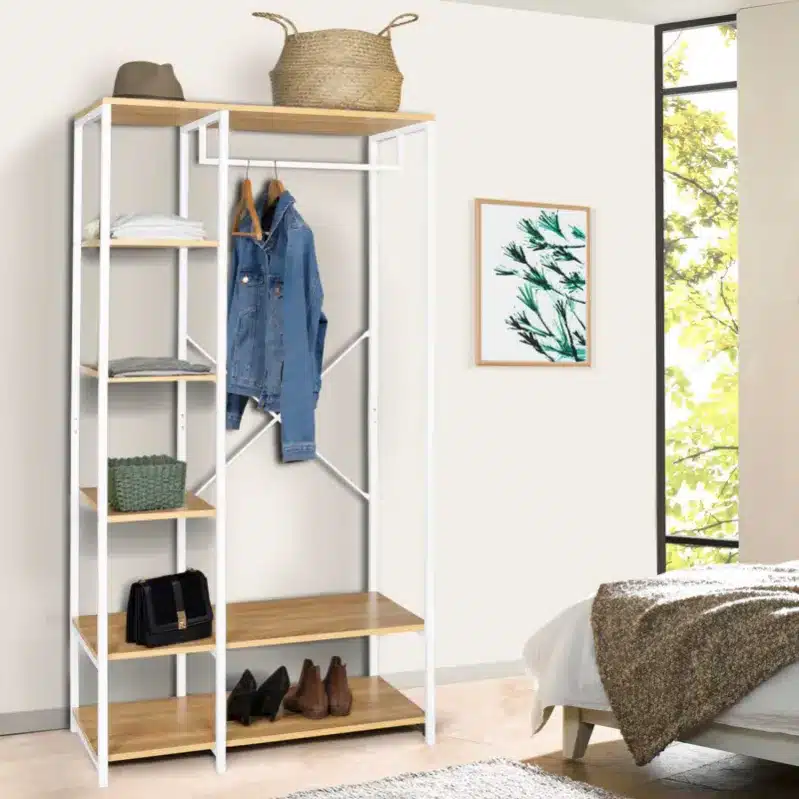How to Build a Sustainable Wardrobe with Ethically Made UK Clothing Brands?

In the world of fast fashion, it can often feel impossible to keep up with the latest trends without breaking the bank or the planet. However, a capsule wardrobe featuring items from ethically made, quality UK brands is an excellent alternative. In this guide, we will delve into how to curate a sustainable wardrobe, offering you the opportunity to redefine your style, decrease your carbon footprint, and support ethical brands in the process.
Discovering Ethical and Sustainable UK Brands
When embarking on the journey to build a sustainable wardrobe, the first step is finding ethical brands that align with your principles. Ethical brands prioritize fair labor practices, use of sustainable materials, and a minimal environmental footprint. It’s not about finding the cheapest clothes but about investing in garments that are made to last.
Dans le meme genre : What Are the Ethical Considerations in Genetic Data Privacy?
UK has become a hub for ethical fashion, with a plethora of brands committed to creating quality, stylish, and sustainable clothes. Brands such as People Tree, Seasalt, and Thought are well-known for their commitment to sustainability and ethical manufacturing practices. These brands are transparent about their supply chains and prioritize the use of organic or recycled materials.
When shopping ethically, it’s crucial to do your research. Check out the brand’s ‘About’ page on their website and look for information about their production practices, the materials they use, and how they treat their workers. Brands that are truly ethical will be proud to share this information.
En parallèle : How to Cultivate an Organic Roof Garden in a UK Metropolitan Area?
Building a Capsule Wardrobe
Building a capsule wardrobe is about quality over quantity. It’s about carefully selecting pieces that are versatile, timeless, and well-made. These pieces will form the foundation of your wardrobe, allowing you to create a multitude of outfits without needing to continuously buy new items.
Start by decluttering your existing wardrobe, removing any items that you no longer wear or that are beyond repair. Then, identify the gaps in your wardrobe. Perhaps you need a good pair of jeans, a versatile blazer, or a classic white shirt. Once you’ve identified what you need, you can begin to shop for these items from your chosen ethical brands.
When selecting pieces for your capsule wardrobe, consider their versatility and longevity. Choose items in neutral colours that can easily be mixed and matched, and opt for classic styles that won’t go out of fashion.
Shopping Sustainably
When you’ve found ethical brands you love and have identified the pieces you need, it’s time to start shopping. However, building a sustainable wardrobe isn’t just about what you buy, it’s about how you shop.
Firstly, always try to buy less. By focusing on quality rather than quantity, you can reduce the number of new garments entering your wardrobe and, consequently, reduce your fashion footprint.
When shopping, look for clothes made from sustainable materials. Natural fibers such as organic cotton, hemp, and linen have a lower environmental impact than synthetic materials. Also, check for certifications such as the Global Organic Textile Standard (GOTS), which guarantees that a product is made from a minimum percentage of organic fibers.
Caring for Your Sustainable Wardrobe
An important yet often overlooked part of building a sustainable wardrobe is how you care for your clothes. By looking after your garments properly, you can extend their lifespan and reduce the need to replace them.
Always follow the care instructions on the label. Many clothes can be washed at lower temperatures or air-dried, saving energy. Avoid using harsh chemicals or bleach, which can damage the fibers and shorten the lifespan of your clothes. Instead, opt for eco-friendly detergents.
Consider fixing your clothes rather than replacing them. Learning basic repair skills such as sewing a button or darning a hole can significantly extend the life of a garment.
Supporting the Circular Fashion Economy
The circular fashion economy aims to reduce waste and pollution by keeping materials in use for as long as possible. By supporting this model, you can further contribute to building a sustainable wardrobe.
You can support the circular fashion economy in several ways. Consider buying second-hand or vintage pieces, or swapping clothes with friends. If you have clothes you no longer wear, don’t throw them away. Instead, donate them to charity, sell them online, or recycle them.
In conclusion, building a sustainable wardrobe doesn’t have to be a daunting task. By selecting ethically made, quality pieces, shopping thoughtfully, caring for your clothes properly, and supporting the circular fashion economy, you can create a wardrobe that not only looks good but does good too.
Choosing the Perfect Fit with Brand Ratings
Finding the right fit is not just about the size and style of the clothes, but also about aligning with your personal values. Brand ratings are an excellent tool for helping you make an informed decision. These ratings provide a comprehensive analysis of a brand’s ethical and sustainable practices, including their labour rights, environmental footprint, animal welfare, and more.
The Fashion Revolution’s Fashion Transparency Index and Good On You are two well-known platforms that offer these ratings. They analyse a brand’s commitment to the environment, labour conditions, and overall sustainability. These platforms also offer apps that you can download for easy access to brand ratings while you’re shopping.
Not all "green" or "sustainable" claims made by fashion brands are accurate, and these ratings help uncover the truth. They can help you distinguish between genuine sustainable ethical brands and those that are merely greenwashing.
One example of a highly rated, luxury ethical brand is Stella McCartney. Known for her commitment to creating easy, effortless styles without compromising her ethical and sustainable values, Stella McCartney is a top pick for many looking to build a sustainable wardrobe.
Embracing Second-Hand and Vintage
Embracing second-hand and vintage fashion is a fantastic way to build a sustainable wardrobe. It promotes the idea of reusing and recycling, cutting down on the demand for fast fashion and its devastating impacts on the environment.
Charity shops, vintage stores, and online platforms like Depop, Ebay, and Vinted offer a wide selection of second-hand and vintage clothes. This is not only an eco-friendly option but also a budget-friendly one.
Additionally, wearing second-hand and vintage clothes gives you the opportunity to have unique pieces in your wardrobe that are not mass-produced. This adds a whole new dimension to your personal style, allowing you to express your individuality.
One important point to remember: just as with new clothes, it’s important to consider the material of second-hand clothes. Opt for garments made of sustainable materials like organic cotton, hemp, and linen, and avoid synthetic fabrics that are harmful to the environment.
Conclusion
Building a sustainable wardrobe is a journey of self-discovery, educating oneself, and making conscious choices. It’s about moving away from the culture of fast fashion and towards a more sustainable fashion industry. It’s about choosing a timeless capsule wardrobe over throwaway trends, prioritising quality over quantity, and choosing ethical sustainable brands over those that exploit the environment and their workers.
Remember, every little change counts. Whether it’s checking the brand ratings before a purchase, opting for second-hand or vintage pieces, or simply washing your clothes at a lower temperature – you’re making a difference. By taking these steps, you’re not only creating a wardrobe that reflects your style, but also your values. You’re becoming a part of the solution to the problems in the fashion industry, and that is something truly fashionable.
